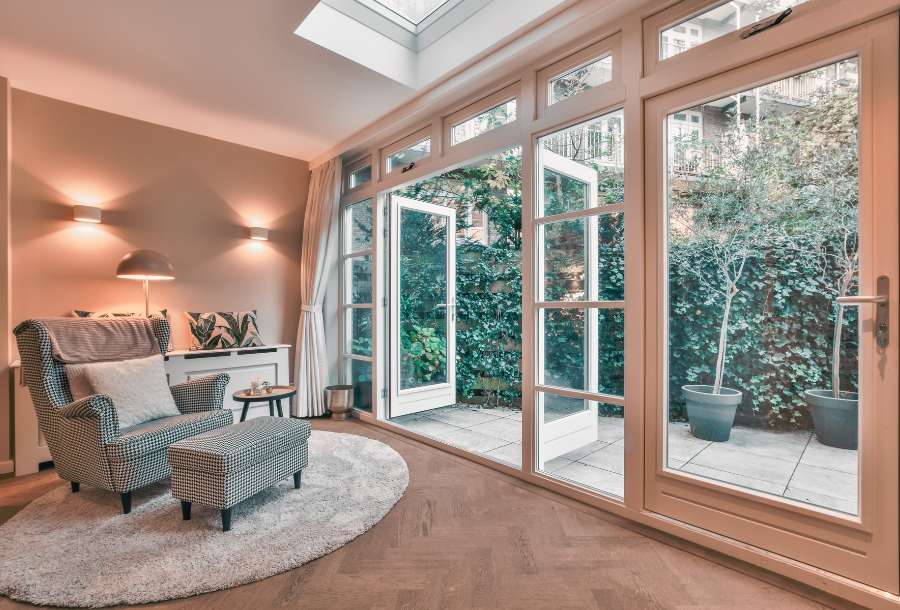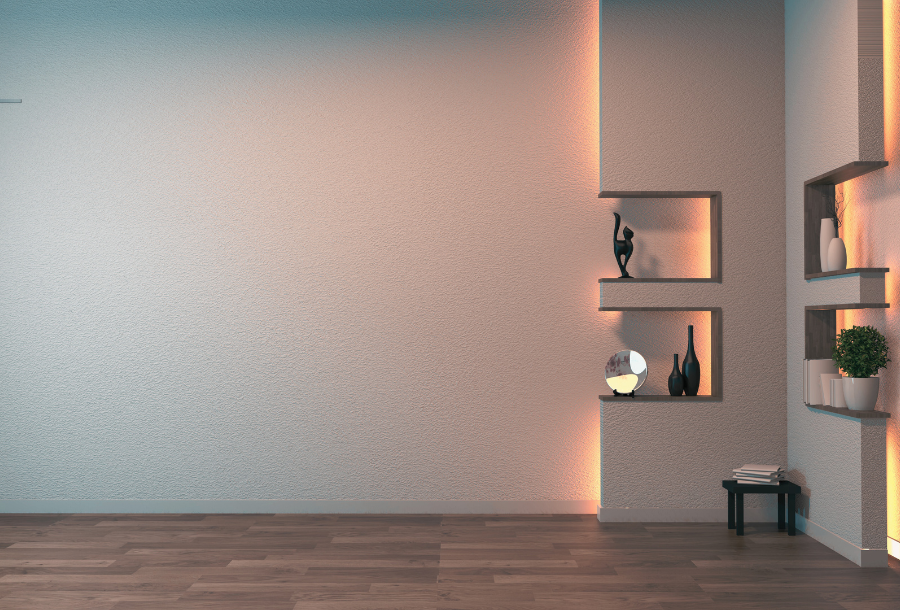Selling fast starts with great photos, especially when most buyers scroll listings on their phones first. The challenge? An empty house can look plain or a bit cold at first glance. But with smart photography, you can turn that blank canvas into a place buyers can picture themselves living in. First impressions happen in seconds. If your empty house looks bright, warm and full of possibility, you’ll get more clicks, more viewings and better offers.
At the heart of it all is simple buyer psychology: people want to imagine their life in the property. An empty house gives them a clean slate; your photos help them see what’s possible.
Contents
- 1 Light First, Everything Else Second
- 2 Show Off the Bones
- 3 Compose for Depth So Rooms Don’t Look Flat
- 4 Add a Little Warmth
- 5 Virtual Staging
- 6 Cleanliness Sells
- 7 Floor Plans and Exteriors
- 8 Edit Lightly – Keep it Real, But at Its Best
- 9 Where This Fits in the Real World (Including Cash Buyers)
- 10 DIY Friendly Tips
- 11 Quick Takeaways
- 12 FAQs
Light First, Everything Else Second
Light sets the mood, especially when there’s nothing else in the room to distract the eye.
- Let the daylight in. Open blinds and curtains. Daylight makes rooms feel bigger, fresher and more expensive.
- Shoot at the right time. Early morning or late afternoon light is softer and warmer. Midday sun is harsh and can make rooms look flat and shadowy.
- Top up gently with artificial light. If a room’s a bit dim, switch to soft, warm bulbs that match daylight. That keeps colours looking natural and inviting.
Little note: the cleaner the space, the better the light looks. In an empty house, dust and smudges stand out – wipe glass, mop floors and polish anything that reflects.
Show Off the Bones
No sofas, no distractions – perfect. Use that to highlight the architecture.
- Make the features the hero. High ceilings, big windows, original fireplaces, exposed beams – give them their own shots.
- Shoot for flow. Stand in a corner and capture the view through to the next room. It helps buyers understand how the home connects.
- Use angles to flatter. Slightly lower angles make ceilings feel taller; slightly higher shots can explain a room’s layout.
- Bring the outside in. If there’s a garden, trees, or a nice street view, frame it through a window. It instantly adds lifestyle.
Compose for Depth So Rooms Don’t Look Flat
Composition is what makes a photo feel “wow” instead of “meh.”
- Corners are your friend. Shooting diagonally gives you natural leading lines and depth.
- Go wide. A wide-angle lens (or the wide setting on your phone) helps fit a whole room in, but don’t overdo it. Extreme wide angles warp walls and make spaces look odd.
- Try the rule of thirds. Put interesting features slightly off-centre to keep photos engaging.
Add a Little Warmth
A totally bare room can feel clinical. You don’t need to stage the entire home; add a few simple cues that suggest comfort.

- Keep it neutral. A leafy plant on a windowsill, a soft rug to “anchor” a living area, or a simple piece of art leaning on a console can transform a photo.
- Give kitchens and bathrooms a hint of life. A bowl of fruit on the counter. Fresh, neatly folded towels in the bathroom. Done.
- Don’t clutter. Two or three items is plenty. The goal is “welcoming,” not “someone lives here.”
Virtual Staging
Virtual staging adds furniture and décor digitally. Used well, it helps buyers imagine how a room could look, without the extra cost and faff of physical staging.
- Stage the rooms that sell the home. Living room, dining area and primary bedroom are usually worth it.
- Match the style to the property. Clean, modern pieces for a modern flat; more character for a period home.
- Be transparent. Always include the original, unstaged photo too and label staged images clearly. Buyers appreciate honesty.
Cleanliness Sells
An empty house has nowhere to hide its flaws, so give it a quick tune-up before you shoot.
- Clean everything. Windows, sills, skirting boards, switches, mirrors and floors. Dust glows in sunlight – get rid of it.
- Do tiny fixes. Patch small holes, touch up chips, straighten wonky socket plates, tighten loose handles.
- Think “hotel clean.” Shiny taps, spotless glass and tidy lines signal “well cared for.”
Floor Plans and Exteriors
Photos show what a home feels like. Floor plans show how it works.
- Include a floor plan. It helps buyers understand room sizes, furniture placement, and flow, especially useful in an empty house where scale can be hard to gauge.
- Don’t forget the outside. A clean, bright front elevation shot builds curb appeal. If there’s a garden, patio, balcony, or driveway, show it and, where possible, connect those shots to interior views for a sense of lifestyle.
Edit Lightly – Keep it Real, But at Its Best
Editing should polish the truth, not bend it.
- Fix the basics first. Straighten vertical lines, correct perspective and balance exposure and white balance.
- Keep it bright and natural. Nudge brightness and vibrance, but avoid neon colours and crunchy HDR effects.
- Make the set feel cohesive. Apply similar edits across all photos so the listing feels consistent.
Tip: You can do a lot with free or built-in phone editing tools; there’s no need to get fancy.

Where This Fits in the Real World (Including Cash Buyers)
Good photos don’t just win attention; they save time. Maybe you’ve already moved out, or the property’s unoccupied and you’re covering council tax, utilities for viewings and insurance. Strong images help your empty house sell faster and reduce those holding costs.
But sometimes, even with great photos and a fair price, a home lingers. If you need speed and certainty, perhaps it’s a probate sale, a relocation, or the property needs work – you could consider selling to a cash-buying company:
- Pros: quick completion (often weeks, not months), fewer fall-throughs and “as-is” sales are common – handy if your empty house needs repairs.
- Cons: You’ll usually accept a lower price in exchange for speed and simplicity.
If you explore this route, ask for proof of funds, check fees and any tie-in periods, use your own solicitor and get more than one offer to compare. It’s not for everyone, but it’s a pragmatic backup if you need a clean, fast exit.
DIY Friendly Tips
- Test a few angles per room. Move a little. Small shifts can make a big difference.
- Compare times of day. Snap the same room in the morning and late afternoon—choose what flatters the most.
- Use a tripod or a shelf. Steadier shots, lower ISO, cleaner results.
- Think like a buyer. Space, light, storage, flow. Show those clearly and you’ll win more viewers.
Quick Takeaways
- Use natural light and shoot at softer times of day.
- Highlight features (windows, floors, ceilings, fireplaces).
- Shoot from corners for depth; keep lines straight.
- Add a couple of simple props for warmth.
- Try virtual staging for key rooms – but label it clearly.
- Include a floor plan and curb-appealing exteriors.
- Edit for balance and consistency – keep it real.
- If selling drags on, a reputable cash buyer can be a fast, low-hassle option.
FAQs
Q1: What time is best to photograph an empty house? Early morning or late afternoon, soft, warm light makes rooms feel welcoming.
Q2: Do I need pro gear? Not necessarily. A modern phone, steady hands (or a tripod) and good light go a long way.
Q3: How many props should I add? Two or three per room at most. Think plant, rug, towels, simple and neutral.
Q4: Is virtual staging worth it? Yes, especially for the living room, dining area and main bedroom, but always show the real photo too.
Q5: Why include a floor plan? It explains layout and scale, which can be hard to judge in an empty house.
Q6: How should I edit? Straighten verticals, balance exposure and colour, add a gentle touch of vibrance, then stop.
Q7: Can bad photos hurt a sale? Absolutely. They reduce clicks and viewings. Great photos do the opposite.
Q8: For cash sales, do photos still matter? Yes. Even cash buyers judge quickly. Strong images help you get faster, better offers, no matter who’s buying.
Related articles


